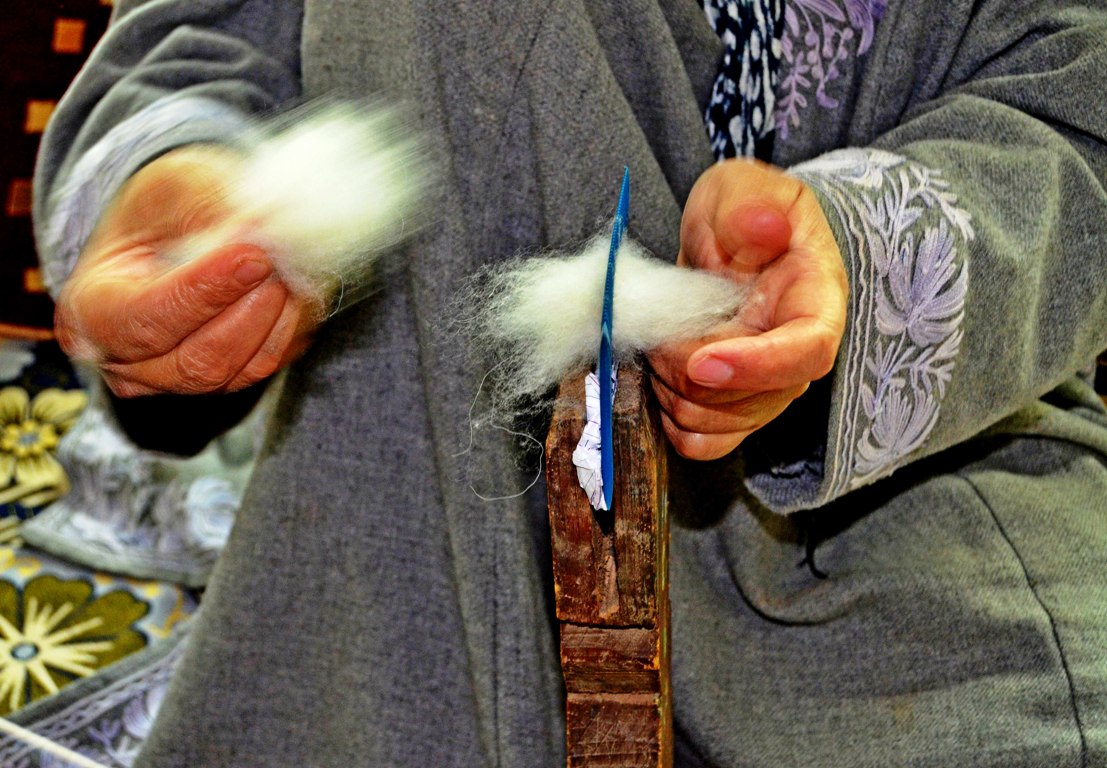by Tahir Bhat
SRINAGAR: In a shocking development, the sheep and goat wool rates have nosedived to the 1980s’ thus triggering a serious crisis for the Jammu and Kashmir herders. Jammu and Kashmir produced almost 80 lakh kilograms of wool in a year.

“I remember, we used to buy wool in 1980s at Rs 30-35 per kilogram. The prices in 2017-18 were hovering around Rs100-110. The prices have fallen to Rs 30-35 in 2020-2021,” Mohammad Salim beg, former Director-General Tourism, who has held various wool and craft related positions, said. “A shepherd who is also a wool sharer told me that this year many sheep breeders paid for sharing in kind by leaving the shared wool with the shearer i.e zero return for the breeder.”
Despite being a major wool producer, Jammu and Kashmir is one of the places where wool processing has gone to zero. This, however, has helped the textile hub in Punjab to manage better processing and secure the raw material from Jammu and Kashmir almost at throwaway costs.
Wool is the major income for Gujjars, Bakerwals, Chopans and Gaddis.
Though commodities like wool are susceptible to unsettling market conditions, Beg said, the community leaders would persuade the Government during adverse market conditions to offer support price to the breeders. “The State is gone; the UT has no space for genuine public representatives. The community leaders have gone into a shell. The present ruling hierarchy has no inkling of such problems,” Beg regretted.
Jammu and Kashmir is believed to have more than three million sheep and goats. These herds are playing a key role in managing the finances of the households, year after year. This has made Jammu and Kashmir the second-highest wool producer in the country.
Having an intimate knowledge of the progression of this sleeping industry into a vibrant and remunerative economic enterprise, Beg said Jammu and Kashmir brought about a revolution in this sector in the 1970s when a massive breed up-gradation programme was done by importing Australian merino, Corrie dale, Soviet Merino and others species that resulted in the production of soft and long-staple wool.

In the subsequent years, the government sought help and assistance from CFTC (Commonwealth Fund for technical cooperation) and UNDP for the processing of the local wool. “Under a comprehensive plan, Jammu and Kashmir set up institutions to cater to the needs of the woollen processing,” Beg said. “Himalayan Wool Combers, Jammu was meant to produce combed fine merino tops. Alongside Sheep and Sheep Products Board was set up for wool purchase and sale as also for offering minimum support price to avoid distress sale,” Beg said. “UNDP and CFTC experts provided technical assistance for processing and weaving. Handloom Development Corporation was established to undertake weaving and marketing of the fabrics. Thus Kashmir tweed was reborn in the villages and hamlets of Kashmir in the traditional weaving areas.”
A senior functionary of the sheep husbandry department said the rates have apparently fallen because of the closure of weaving wool processing units across India.















